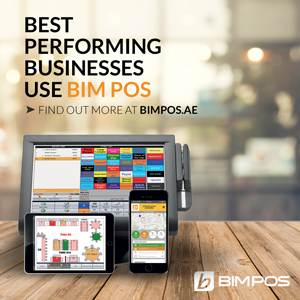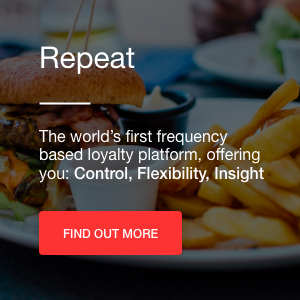Picture is for illustrative purposes only
Image Credit: Supplied
There are over 11,800 restaurants and cafes in Dubai alone, the competition for custom in the UAE is fierce, and for food and beverage brands to succeed, they need to be strategic.
Did you know, there are more than 9.52 million active social media users in the UAE? That equates to 99% of the population being active on social media.
It makes sense to use your marketing and advertising budget to reach the most interested people as possible, and social media is one method of connecting with your target audience.
In this article, we will look at the most popular social media platforms in the UAE, who is using them, and how you should be making the best use of this information.
The Most Active Social Media Platforms in the UAE are:
- Facebook (82%)
- WhatsApp (82%)
- YouTube (82%)
- Facebook Messenger (63%)
- Instagram (61%)
- Twitter (48%)
- Skype (45%)
- LinkedIn (43%)
- Snapchat (32%)
- Pinterest (25%)
- WeChat (23%)
- Viber (19%)
- Line (17%)
- Tumblr (16%)
- Reddit (15%)
- Twitch (14%)
(Source – MediaLab.me)
As you can see, the biggest platforms where you can post content and engage with your audience are: Facebook, YouTube, Instagram, Twitter, and LinkedIn.
Each of these platforms has a different demographic, and a different way to connect with your potential guests. It’s important that you sign up to all of these channels with your official business name (this will prevent others from using the handle or posing as your business); but to determine which channels you should be posting on a regular basis, you need to look at your business and your customers.
Deciding on a Social Media Strategy for Your Restaurant
Before you start creating content and posting on social media, you need to know who your customers are, and what they want from your brand.
For example – If most of your customers are businesspeople arranging corporate lunches, then posting on LinkedIn (a professional network) will be more likely to reach your target audience.
There is also a difference with the gender demographic:
- Facebook – 74% male users and 26% female users
- Instagram – 62% male users and 38% female users
- Twitter – 68% male users and 32% female users
- LinkedIn – 71% male users and 29% female users
(Source: MediaLab.me)
So, if you’re looking to promote a Lady’s Day lunch for example, it would make more sense to use Instagram and Twitter where there are a larger portion of customers who will be interested in your offerings.
Knowing who your audience are, what they’re interested in, and what channels they’re using will make a huge difference in boosting the success of your social media strategies.
Making the Best Use of Each Social Media Channel
Each Social Media channel has a particular strength – Facebook allows for longer posts, Twitter allows brief news stories or short posts, Instagram largely focuses on images, YouTube is designed for videos, and LinkedIn connects you with other professionals.
Once you know who your customers are, and the channels they visit, it’s time to begin creating content that will appeal to them.
FACEBOOK:
Content on Facebook is ranked by engagement levels, the more people who are commenting and interacting with your posts, the more the Facebook algorithm will share those posts on people’s news feeds.
Your profile should be properly filled in, with opening and closing times, venue location, type of cuisine served, any allergy information, etc.
Your content needs to be posted regularly, and be a mix of educational, informative and sales. If you post all sales posts, people will stop following your account or possibly even report you for spam. You need to give your customers good reasons to want to keep coming back and engaging.
You can use hashtags on Facebook, but you shouldn’t use more than two in any one post. It’s been found that using more than two hashtags actually LOSES you audience engagement as the posts are seem as spam and ignored.
Posts with images see 2.3X the amount of engagement (Hubspot) than just text alone, so it’s a good idea to have a stunning, high-quality and relevant image posted alongside your text.
Images on Facebook should be at least 720 pixels and no more than 2048.
Instagram posts must have either at least one image or a video attachment to be allowed to be posted on the site.
There are a variety of different effects you can use; including filters that change the colour and style, and the Boomerang which makes for a continuous animation.
Your profile should have a link back to your website (or a platform such as LinkTree which allows you to have more than one web-link), and the relevant information about your establishment.
Content should always be high quality and interesting. You might consider using a ‘grid’ design to create patterns within the Instagram layout (such as alternating between an image with a text quote and a picture to create a checkerboard effect).
On Instagram you can use up to 30 hashtags, but it’s advised that you split these away from your post by using this format:
Example Post
Text
.
.
.
.
.
#hashtags #go #here
This is so that when people reach the end of your text, they know that the rest of it is the hashtags, and it’s easier for them to read.
Hashtags must always be relevant to your post – for example, if you’re posting a #meatfreemonday image of a salad, then it works; but if you’re posting a lamb dish the next day, it would be utterly inappropriate.
Posts on Instagram should be 1080 x 1080 (for square images), 1080 x 566 (for landscape), or 1080 x 1350 (for portrait).
FACEBOOK AND INSTAGRAM STORIES
Both Facebook and Instagram allow you to post ‘Stories’ to the platform. These are time limited and disappear after 24 hours.
They are an ideal way to post more frequently without clogging up your guest’s feeds, and to advertise time limited offers.
Twitter is a fantastic site for sharing news updates, short bites of information, links to your website, etc.
The maximum character limited for Twitter is 280 characters, and this includes hashtags, emojis and website addresses. So, you need to make sure you’re saying what needs to be said in a clear, concise manner.
You should use a maximum of two hashtags per tweet, and always check that they’re relevant before using them.
Emojis should also be checked before using them, as some have a different meaning than what they initially appear to be.
Posts on Twitter with images are 34% more likely to be tweeted (Postcron). It also helps to make your post stand out in a newsfeed when there is more to it than just plain text.
Images on Twitter should be 1200 x 675.
LinkedIn is very different to the other social media channels, in that it’s designed for businesses to use, rather than being generally socially based.
It makes an ideal platform however if you’re offering corporate meals, deliveries, or are situated in an area where many businesspeople meet.
Posts on LinkedIn can also use hashtags, it is recommended that you don’t use more than 5 in any one post. So, you need to pick carefully and make sure they match the meaning, message and your audience.
On this channel, posts with images are 98% more likely to be commented on. (Hubspot)
Update link images should be 1200 x 628 and Tall Pin images 1536 x 768
Final Thoughts
By having a strong social media presence, you will be able to connect not only with your local customers, but appeal to those who are travelling to the region.
Creating content that is vibrant, exciting and stands out will help you to be recognised, and even become someone’s destination of choice.
Social Media Strategies are an on-going process of trial and error, adaptation and alteration. You cannot just post sporadically and expect to succeed.
By investing in your social media, you are investing in the future of your business and its continued success.













